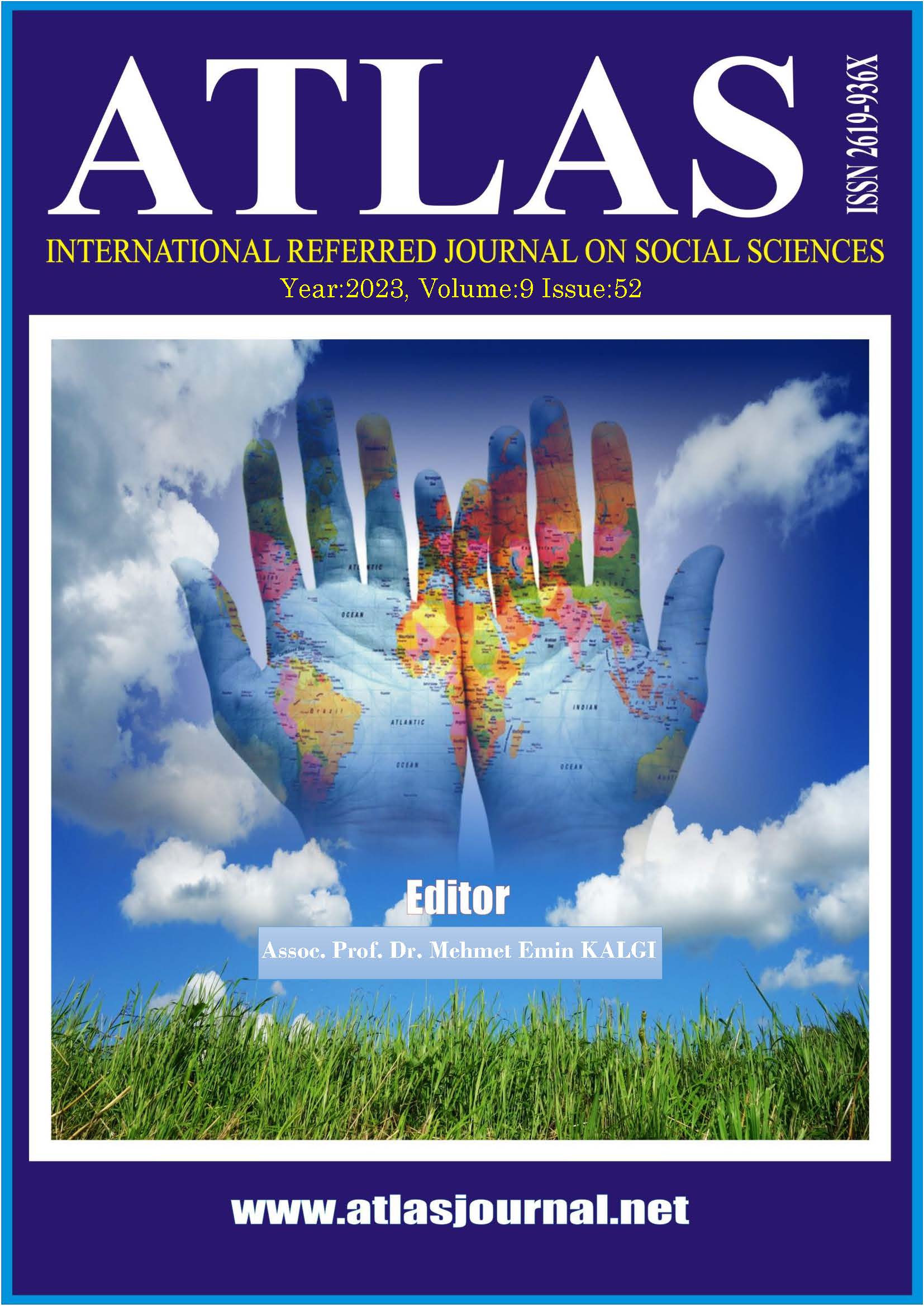Özel Eğitim Öğretmeni Adaylarının Üstün Zekâ Algıları
DOI:
https://doi.org/10.5281/zenodo.10298234Anahtar Kelimeler:
Özel Eğitim, Öğretmen Adayları, Üstün Zekâ, AlgıÖzet
Bu çalışmanın amacı özel eğitim öğretmeni adaylarının üstün zekâ algılarını tespit etmektir. Bu amaçla, öğretmen adaylarından üstün zekâlı çocukların özelliklerinin neler olduğunu rapor etmeleri istenmiştir. Amerika Birleşik Devletlerinin güney-batısındaki en büyük üniversitelerden birinin özel eğitim öğretmenliği programına devam eden sekiz öğretmen adayı gönüllü olarak bu çalışmaya katılmışlardır. Sekiz öğretmen adayına açık uçlu bir anket verilmiş ve ardından iki öğretmen adayı ile derinlemesine birer görüşme gerçekleştirilmiştir. Öğrencilerin anket ve görüşmelerde verdikleri cevaplar “Temellendirilmiş Kuram” (Grounded Theory) aracılığıyla analiz edilmiştir. Öğretmen adaylarının verdikleri cevaplar tümevarımsal metod kullanılarak analiz edilmiş ve 4 tane tema oluşturulmuştur: akademik özellikler, bilişsel özellikler, sosyal/kişilerarası özellikler ve üstün zekalıları tanılamada engeller. Çalışmamızın bulguları daha önce üstün zekâlı olarak tanımlanan veya üstün zekâ ile ilgili dersler alan özel eğitim öğretmeni adaylarının üstün zekâlı çocukların özelliklerinden bahsederken aynı özelliklere vurgu yaptıklarını ortaya çıkarmıştır. Çalışmamızın bulgularından hareketle üstün zekâ tanısı almış kişilerin öğretmenlik mesleğine yönlendirilmesi amacıyla bu kişilere daha fazla burs imkânlarının oluşturulması ve ayrıca öğretmenlik programlarındaki üstün zekâlılar ile ilgili derslerin sayılarının arttırılması tavsiye edilmektedir.
Referanslar
Akar, İ. &Akar, Ş. Ş. (2012). İlköğretim okullarında görev yapmakta olan öğretmenlerin üstün yetenek kavramı hakkındaki görüşleri [Primary school in-service teachers’ perceptions of giftedness]. Kastamonu Education Journal, 20, 423-436.
Alvidrez, J. & Weinstein, S. R. (1999). Early teacher perceptions and later student academic achievement. Journal of Educational Psychology, 91(4), 731-746
Bégin, J., & Gagné, F. (1994). Predictors of general attitude toward gifted education. Journal for the Education of the Gifted, 18 (1), 74-86.
Bianco, M., Harris, B., Garrison-Wade, D., & Leech, N. (2011). Gifted girls: Genderbias in gifted referrals. RoeperReview: A Journal on Gifted Education, 33(3), 170–181. https://doi.org/10.1080/02783193.2011.580500
Bianco, M & Leech, L. N. (2010). Twice-exceptional learners: effects of teacher preparation and disability labels on gifted referrals. Teacher Education and Special Education, 33(4), 319-334.
Clasen, D. R., Middleton, J. A., & Connell, T. (1994). Assessing artistic and problem-solving performance in minority and nonminority students using a nontraditional multidimensional approach. Gifted child quarterly, 38(1), 27-32. doi: 10.1177/001698629403800104
Creswell, W. J. (2014). Research design: Qualitative, quantitative and mixed methods approaches (4th ed.). Thousand Oaks,CA: Sage Publications.
Davis, G. A., Rimm, S. B. (2004) Education of the gifted and talented (5th ed.) Needham Heights, MA: Allyn & Bacon.
Elhoweris, H., Mutua, K., Alsheikh, N., & Holloway, P. (2005). Effect of children's ethnicity on teachers' referral and recommendations decisions in gifted and talented programs. Remedial and Special Education, 26, 25-31.
Endepohls- Ulpe, M., & Ruf, H. (2005). Primary school teachers’ criteria for the identification of gifted pupils. High AbilityStudies, 16 (2), 219-228
Ford, Y. D. (1998). The underrepresentation of minority students in gifted education: Problems and promises in recruitment and retention. The Journal of Special Education, 32(1), 4-14. doi; 10.1177/002246699803200102
Fraiser, M. M., Garcia, H. J., & Passow, H. A. (1995). A review of assessment issues in gifted education and their implications for identifying gifted minority students. The National Research Center on the Gifted and Talented.
Glaser, G. B. & Strauss, L. A. (1967). The discovery of grounded theory: Strategies for qualitative research.Chicago, IL: Aldine Publishing Company.
Grantham, T. C. (2002). Underrepresentation in gifted education: How did we get here and what needs to change? Roeper Review, 24, 50–51.
Hallahan, D. P., Kauffman, J. M., & Pullen, P. C. (2009) Exceptional learners (11th ed.)
Needham Heights, MA: Allyn & Bacon.
Hunsaker, S. L. (1994). Creativity as a characteristic of giftedness: Teachers see it, then they don’t. Rooper Review, 17 (1), 11-15
Jenkins, M. D. (1936). A socio-psychological study of Negro children of superior intelligence. Journal of Negro Education, 5, 175-190
Maker, C. J. (1996). Identification of gifted minority students: A national problem, needed changes and a promising solution. Gifted Child Quarterly, 40, 41-50. doi: 10.1177/001698629604000106
Michener, L. A. (1980). A survey of the attitudes of administrators, teachers and community members toward the education of gifted children and youth (Educational doctorate dissertation). Retrieved from Dissertations&Theses: Full Text. (Publication No. AAT 8109558).
Miller, E.M. (2009). The effect of training in gifted education on elementary classroom teachers' theory- based reasoning about the concept of giftedness. Journal for the Education of the Gifted, 33 (1), 65-105.
Morris, S. K. (1987). Student teachers’ attitudes toward gifted students. Creative Child and Adult Quarterly, 12, 112-114
Persson, R. S. (1998). Paragons of virtue: Teachers’ conceptual understandings of highability in an egalitarian school system. High AbilityStudies, 9 (2), 181-196.
Peterson, J., &Margolin, L. (1997). Naming gifted children: An example of unintended “reproduction.” Journal for the Education of the Gifted, 21 (1), 82–100.
Powell, T., & Siegle, D. (2000). Teacher bias in identifying gifted and talented students. The National Research Center on the Gifted and Talented Newsletter, Spring, 13-15.
Renzulli, J. S. (2005). The Three-Ring Conception of Giftedness: A Developmental Model for Promoting Creative Productivity. In R. J. Sternberg & J. E. Davidson (Eds.), Conceptions of giftedness (pp.246–279).CambridgeUniversity Press. https://doi.org/10.1017/CBO9780511610455.015
Sak, U. (2011, April). Prevelance of misconceptions, dogmas, and popular views about giftedness and intelligence: a case from Turkey. High Ability Studies, 22, 179-197.
Siegle, D. & Reis, M. S. (1998). Gender differences in teacher and student perceptions of gifted students’ ability and effort. Gifted Child Quarterly, 42 (1), 39-47
Siegle, D. (2001). Teacher bias in identifying gifted and talented students. Paper presented at the annual meeting of the Council for Exceptional Children, Kansas City, MO.
Siegle, D., Moore, M., Mann, L R., & Wilson, E H. (2010) Factors that influence in-service and pre-service teachers’ nominations of students for the gifted and talented programs. Journal for the Education of the Gifted, 33 (3), 337-360.
Van Tassel-Baska, J., Patton, J., &Prillamon, D. (1991). Gifted youth at risk: A report of a national study. Reston, VA: The Council for Exceptional Children.
Van Tassel-Baska, J. (2002). Using performance tasks in the identification of economically disadvantaged and minority gifted learners: Findings from project STAR. Gifted Child Quarterly, 46(2), 110-123.
İndir
Yayınlanmış
Nasıl Atıf Yapılır
Sayı
Bölüm
Lisans
Telif Hakkı (c) 2023 Atlas Journal

Bu çalışma Creative Commons Attribution-NonCommercial 4.0 International License ile lisanslanmıştır.


